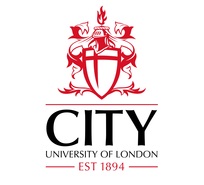
Special feature of a screw vacuum-compressor ‘chamber’ model development.
Number: A1-165
Author(s) : MUSTAFIN T. N., YAKUPOV R. R., KHAMIDULLIN M. S., KHISAMEEV I. G., ALYAEV V. A.
Summary
Wildly using of screw vacuum pumps and vacuum-compressors (which discharge pressure is higher than atmosphere pressure) can be explained by their easy service, reliability, excellent energetic and capacity characteristic and excellent vacuum, they produce. Their future optimization can be reached by using of the working process mathematic modelling, which can takes the place of expensive experimental research (can reduce the count of it). In an engineer point of view, chamber models of the positive displacement machine are still popular and wildly used due to simple of the initial data entering, small calculation time and simple of the results’ explanation. Therefore, their development and updating are still actual goal. The chamber model accuracy are determined generally by the accuracy of leakage flow calculation through the gaps and ports and by the accuracy of heat exchange calculation inside the working chamber. This is especially important for the vacuum machines, which minimal vacuum pressure are determined by the internal leakages. The vacuum inside the working chamber can lead to not only viscosity flow, but also to molecular and mixed flows. Therefore, using only viscosity flow calculation methodises leads to the significant errors. The vacuum also leads to change the heat exchange conditions inside the working chamber. Therefore, those facts should be taken into account. This paper is dedicated to the presenting the way of the solving the problems described above.
Available documents
Format PDF
Pages: 9
Available
Free
Details
- Original title: Special feature of a screw vacuum-compressor ‘chamber’ model development.
- Record ID : 30028728
- Languages: English
- Subject: Technology
- Source: 12th International Conference on Compressors and their Systems
- Publication date: 2021/09
- Document available for consultation in the library of the IIR headquarters only.
Links
See other articles from the proceedings (63)
See the conference proceedings
Indexing
-
Themes:
Compressors;
Heat transfer - Keywords: Vacuum pump; Modelling; Calculation; Leakage; Vacuum chamber; Heat transfer; Simulation; Compressor; Vacuum
-
A comparison of thermal deformation of scroll p...
- Author(s) : HSIEH S. H., ZHANG J., CHOU S.- P., et al.
- Date : 2018/07/09
- Languages : English
- Source: 2018 Purdue Conferences. 24th International Compressor Engineering Conference at Purdue.
- Formats : PDF
View record
-
Numerical simulation on thermal shrouds of a va...
- Author(s) : KUHN M., BODENDORFER K., WINKLER T., JANDE T., KADE A.
- Date : 2025/04/07
- Languages : English
- Source: Cryogenics 2025. Proceedings of the 18th IIR International Conference on Cryogenics, Prague, Czech Republic, 7-11 April 2025.
- Formats : PDF
View record
-
CFD simulation of a dry scroll vacuum pump incl...
- Author(s) : HESSE J., ANDRES R.
- Date : 2016/07/11
- Languages : English
- Source: 2016 Purdue Conferences. 23rd International Compressor Engineering Conference at Purdue.
- Formats : PDF
View record
-
Bi-directional system coupling for conjugate he...
- Author(s) : RANE S., KOVACEVIC A., STOSIC N., SMITH I. K.
- Date : 2021/09
- Languages : English
- Source: 12th International Conference on Compressors and their Systems
- Formats : PDF
View record
-
Analysis of dynamic heat transfer coefficient i...
- Author(s) : EETTISSERI R., REAL M., OLIVERA S.
- Date : 2021/05
- Languages : English
- Source: 2021 Purdue Conferences. 25th International Compressor Engineering Conference at Purdue.
- Formats : PDF
View record
